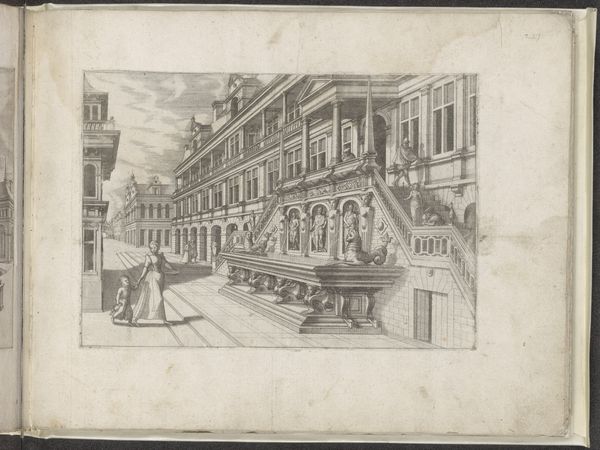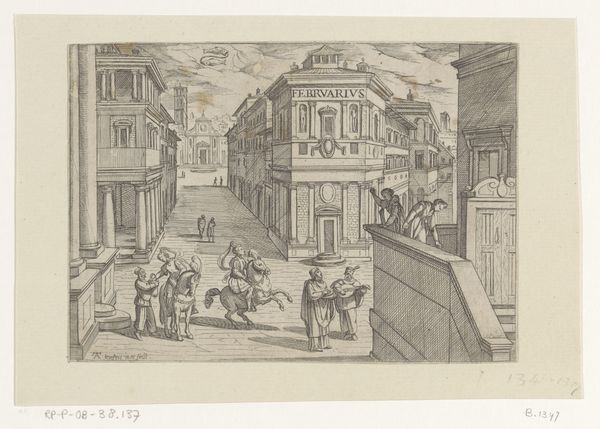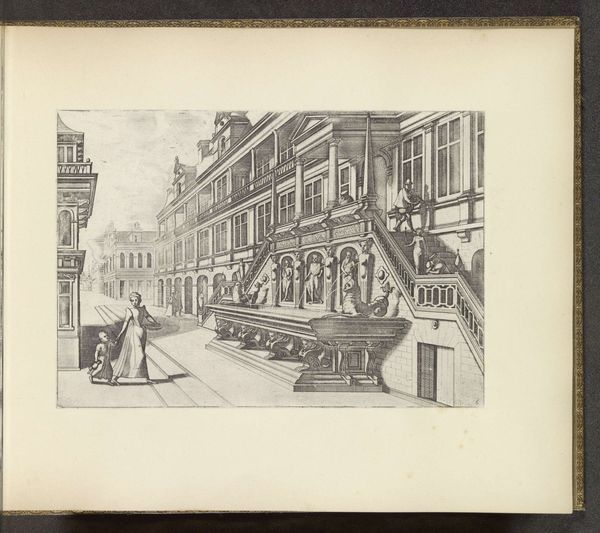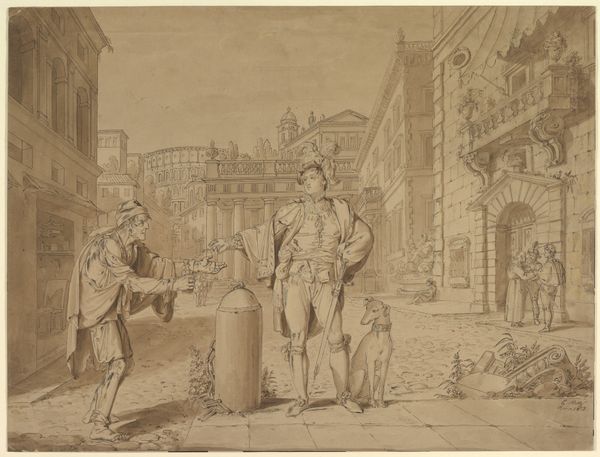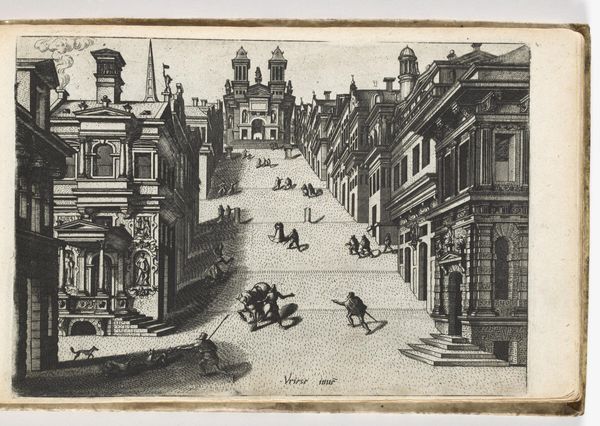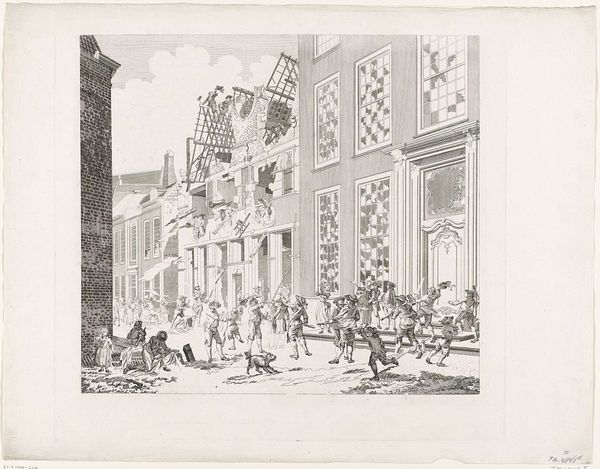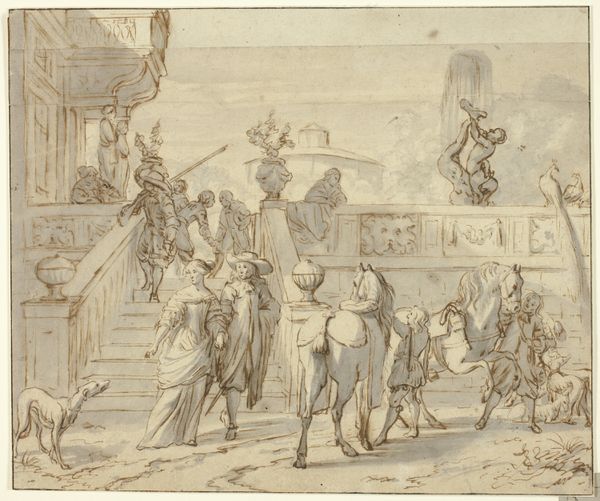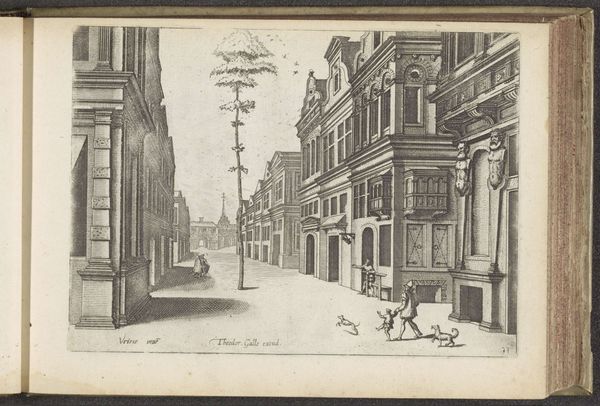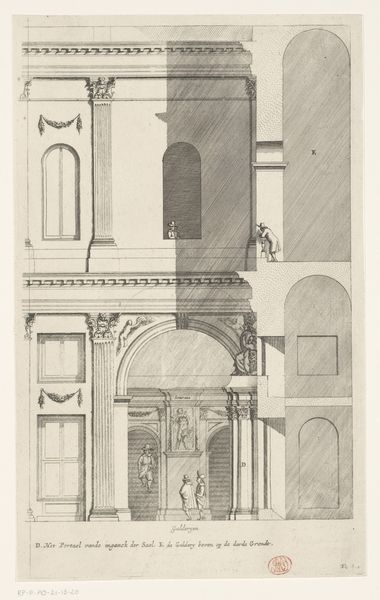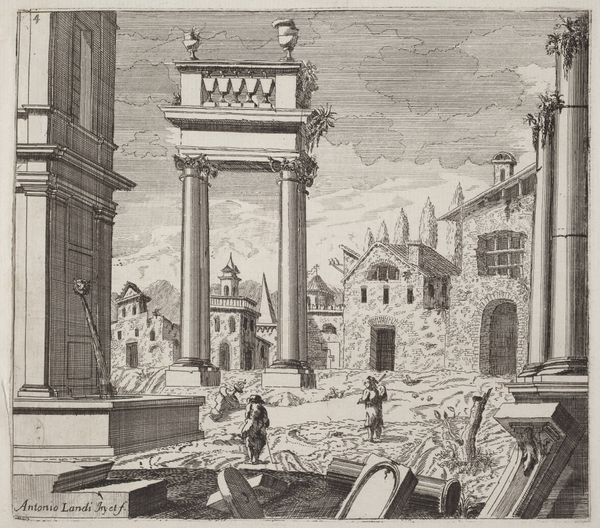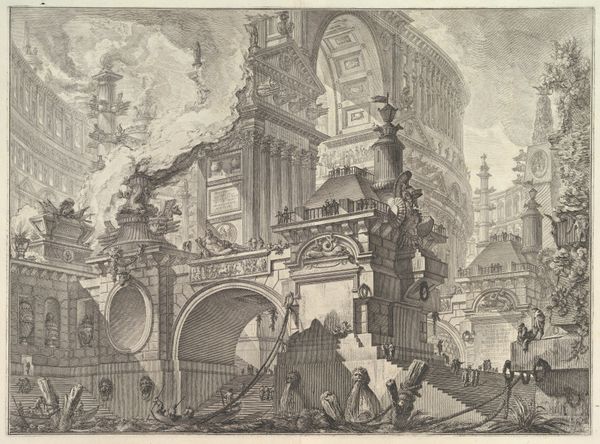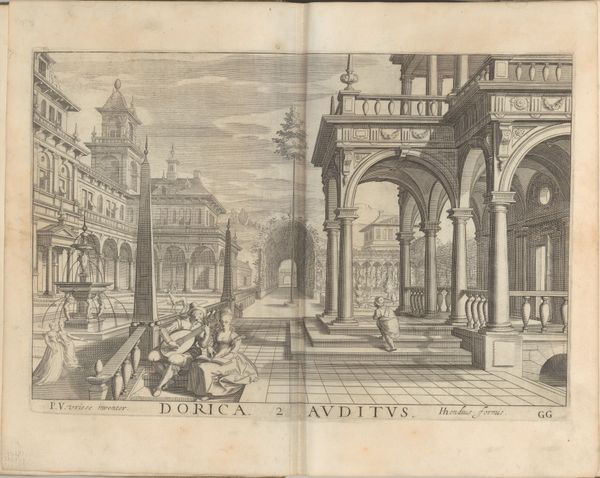
Plate 24: Mercury and Aglauros, from 'Ovid's Metamorphoses' 1641
0:00
0:00
drawing, print, engraving
#
drawing
#
baroque
# print
#
figuration
#
history-painting
#
italian-renaissance
#
engraving
Dimensions: Sheet (Trimmed): 5 9/16 × 8 3/8 in. (14.2 × 21.2 cm)
Copyright: Public Domain
Curator: I’m struck by the tension captured in this rather unassuming engraving. A tense drama unfolds before a grandiose building rendered in intricate detail. Editor: This is Johann Wilhelm Baur's "Plate 24: Mercury and Aglauros, from 'Ovid's Metamorphoses'," created in 1641. Baur was Swiss, and while he certainly participated in the Baroque style then flourishing, it is equally interesting to me that his work so frequently circles back to historical subjects. Curator: Historical subjects indeed. In this moment from Ovid, we see Mercury, identifiable by his winged helmet and caduceus, turning Aglauros to stone. The narrative hinges on her greed and envy, as she obstructs Mercury's pursuit of her sister Herse. Editor: It's fascinating how Baur uses the setting—a stately palace—to underscore themes of power and societal expectation. The cold stone of the building foreshadows Aglauros's transformation. Her seated pose, almost resigned, conveys a lack of agency within this constructed environment. Curator: The architecture dominates! I notice the almost scientific rendering of perspective—lines converging with mathematical precision. But there is tension between such detail in the buildings versus a relative flattening of space overall, especially as our gaze moves further into the picture plane. Do you see a subtle commentary at work? Baur's world building is almost like stage setting… Editor: Precisely! The staged architectural setting, emphasizing rational order, presents a compelling backdrop. This idealized setting can easily evoke the constraints women often experienced, framed as moral failings in classical mythology, reflecting persistent cultural narratives. The Metamorphoses in its earliest form has become almost the cultural operating system on which many sexist traditions rely… Curator: Baur was clearly interested in how stories serve power. It gives you pause when considering how images like this continue to resonate today and within our institutional systems and collective consciousness. Editor: I agree. And for those engaging with Baur's print now, considering the politics embedded within such stories becomes more pressing than ever.
Comments
No comments
Be the first to comment and join the conversation on the ultimate creative platform.
